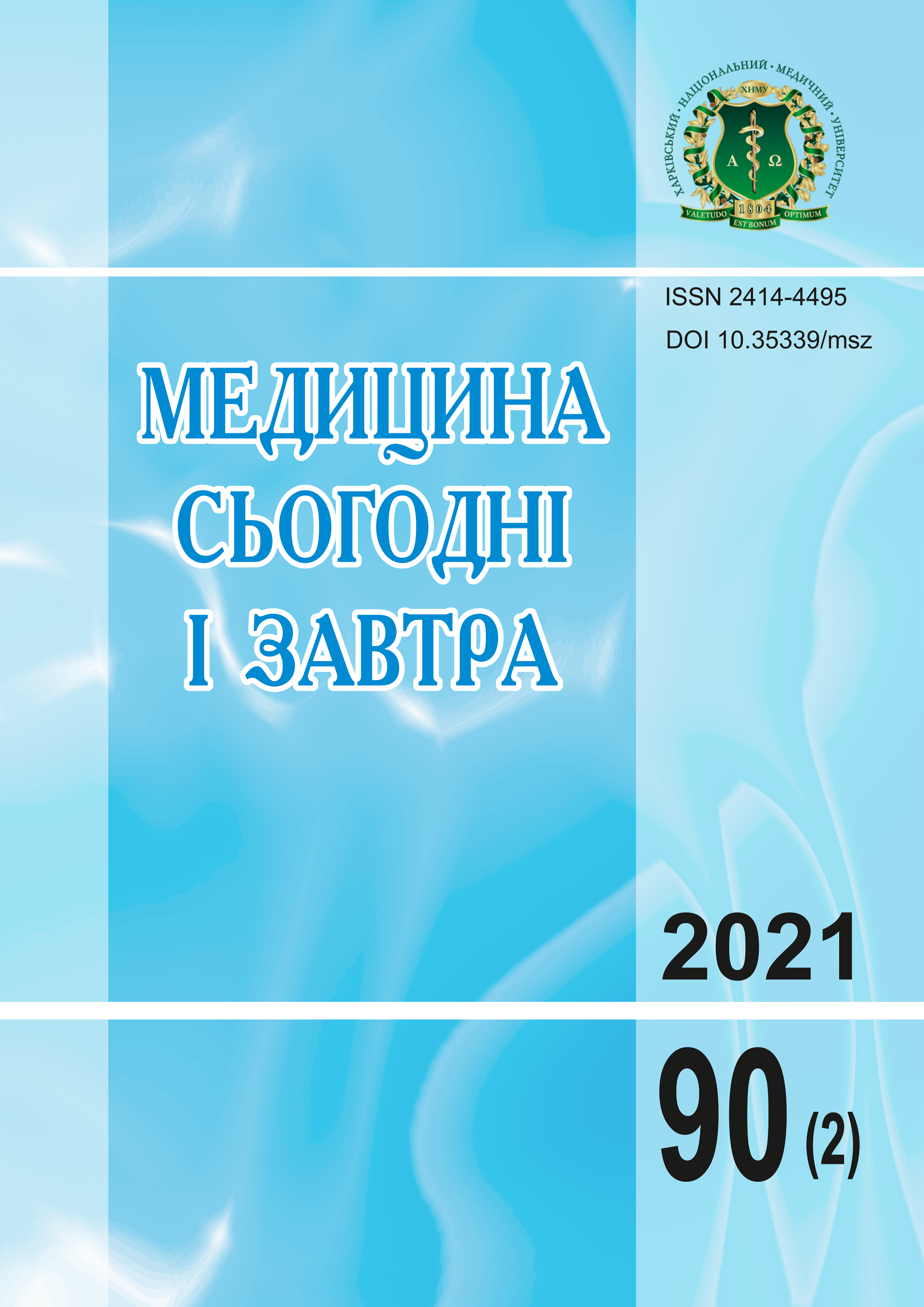Abstract
The relationship between menstrual disorders and obesity of different genesis in adolescent girls has been analyzed. Based on clinical and ultrasound parallels in girls with menstrual disorders on the background of obesity of various genesis, the available data on the pathogenesis of reproductive health disorders in this pathology have been expanded, and the need to improve the algorithm of diagnostic and treatment and prevention measures has been scientifically substantiated. The most informative prognostic criteria for the occurrence of menstrual disorders in obese adolescent girls have been identified, on the basis of which it is possible to form risk groups in which primary prevention is required. According to the World Health Organization, the prevalence of obesity among women of childbearing age ranges from 1.8 to 25.3% in different countries. Body weight plays an important role in the formation of menstrual function. It is known that adipose tissue is involved in the regulation of the menstrual cycle, because it also synthesizes female sex hormones. Excess adipose tissue accumulates steroids and active estrogens. This leads to a change in the production of a number of hormones that disrupt the coordination of the neuroendocrine system. We can say that excess adipose tissue becomes an additional endocrine gland.
Keywords: adolescent girls, overweight, menstrual disorders.
References
Tena-Sempere M. Deciphering puberty: novel partners, novel mechanisms. Eur J Endocrinol. 2012;167(6):733–47. DOI: 10.1530/EJE-12-0669. PMID: 22989465.
Ojeda SR, Lomniczi A, Loche A, Matagne V, Kaidar G, Sandau US, Dissen GA. The transcriptional control of female puberty. Brain Res. 2010;1364:164–74. DOI: 10.1016/j.brainres.2010.09.039. PMID: 20851111. PMCID: PMC2992593.
Aydin Y, Hassa H, Burkankulu D, Arslantas D, Sayiner D, Ozerdogan N. What is the risk of metabolic syndrome in adolescents with normal BMI who have polycystic ovary syndrome? J Pediatr Adolesc Gynecol. 2015;28(4):271–4. DOI: 10.1016/j.jpag.2014.08.011. PMID: 26049937.
Kakuno Y, Amino N, Kanoh M, Kawai M, Fujiwara M, Kimura M, et al. Menstrual disturbances in various thyroid diseases. Endocr J. 2010;57(12):1017–22. DOI: 10.1507/endocrj.k10e-216. PMID: 20938101.
Vigod SN, Strasburg K, Daskalakis ZJ, Blumberger DM. Systematic review of gamma-aminobutyric-acid inhibitory deficits across the reproductive life cycle. Arch Womens Ment Health. 2014;17(2):87–95. DOI: 10.1007/s00737-013-0403-6. PMID: 24420415.
Zangeneh FZ, Mohammadi A, Ejtemaeimehr Sh, Naghizadeh MM, Fatemeh A. The role of opioid system and its interaction with sympathetic nervous system in the processing of polycystic ovary syndrome modeling in rat. Arch Gynecol Obstet. 2011;283(4):885–92. DOI: 10.1007/s00404-010-1776-7. PMID: 21132313.
Nooh AM, Abdul-Hady A, El-Attar N. Nature and prevalence of menstrual disorders among teenage female students at Zagazig university. J Pediatr Adolesc Gynecol. 2016;29(2):137–42. DOI: 10.1016/j.jpag.2015.08.008. PMID: 26343844.
Kniazevych VM, editor. Stan zdorovia ditei 0–17 rokiv vkliuchno v Ukraini ta nadannia yim medychnoi dopomohy za 2006–2008 roky [Health status of children aged 0–17 in Ukraine inclusive and provision of medical care for them in 2006–2008]. Kyiv, 2009. 192 p. [in Ukrainian].
Alymbaev ESh, Ongoeva BA, Isakova FB, Kushubekova NN. Rasprostranennost metabolycheskoho syndroma sredi detei i podrostkov s ozhyreniiem [Prevalence of metabolic syndrome among obese children and adolescents]. Vestnik KRSU [Herald of KRSU]. 2014;14(5):15–17. Available from: http://vestnik.krsu.edu.kg/en/archive/71/2942 [in Russian].
Fux Otta C, Fiol de Cuneo M, Szafryk de Mereshian P, Mereshian P. Síndrome de ovario poliquístico: revisión de su fisiopatogenia [Polycystic ovary syndrome: physiopathology review]. Rev Fac Cien Med Univ Nac Cordoba. 2013;70(1):27–30. PMID: 23920100. [in Spanish].
Costa-Barbosa FA, Telles-Silveira M, Kater CE. Hiperplasia adrenal congênita em mulheres adultas: manejo de antigos e novos desafios [Congenital adrenal hyperplasia in the adult women: management of old and new challenges]. Arq Bras Endocrinol Metabol. 2014;58(2):124–31. DOI: 10.1590/0004-2730000002987. PMID: 24830589. [in Portuguese].
Barbieri RL. The endocrinology of the menstrual cycle. Methods Mol Biol. 2014;1154:145–169. DOI: 10.1007/978-1-4939-0659-8_7. PMID: 24782009.
Swaab Dick S, editor. The human hypothalamus: Basic and clinical aspects, part II: Neuropathology of the human hypothalamus and adjacen brain structures. Vol. 80. Elsevier; 2004. 597 p.

